Langmuir MR1 CNC Mill: Initial Thoughts
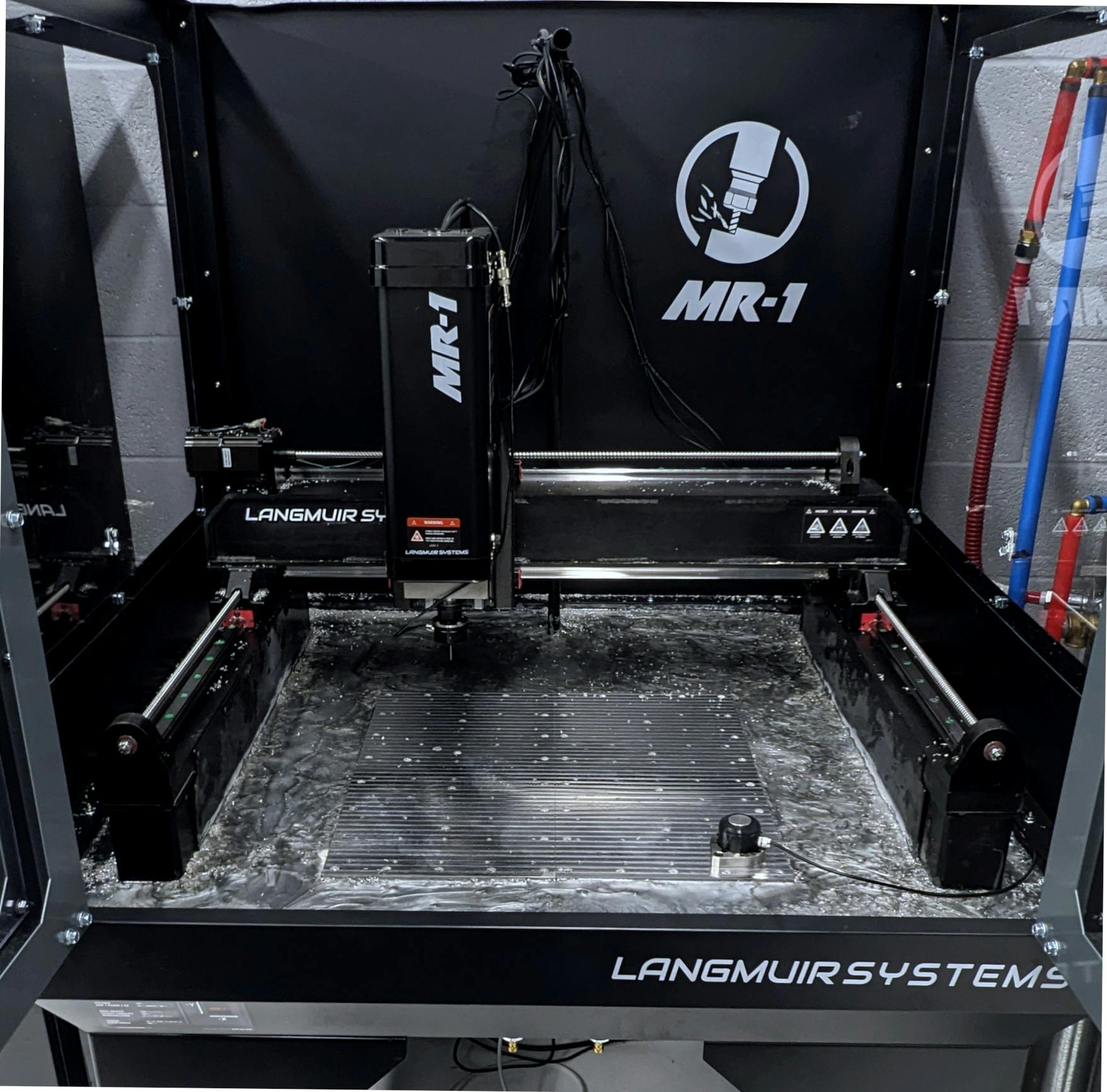
I purchased and assembled a Langmuir MR1 (opens in a new tab) CNC recently.
For the money, it's the best CNC metalworking mill for a personal shop under $7k new..
Zero Affiliation Note: I am merely a simple customer of Langmuir. They have not paid me or influenced me on any of the content written.
In my earlier years, quite a bit of time was spent working in a machine shop environment. Surrounded by Bridgeports, Southbends, and Haas CNC machines. The typical American manufacturing metalworking setup.
Needless to say when it came to metalworking machines. I was spoiled. Remove .5" of material with a .5" tool full slot in aluminum. No problem at all for a Bridgeport mill.
As life goes, my career switched and the job at the machine shop came to an end. The new "shop" is now a 400 sq ft personal space for hobbies.
Everything is now a constraint. Space, electrical power, and cost.
Previous machine
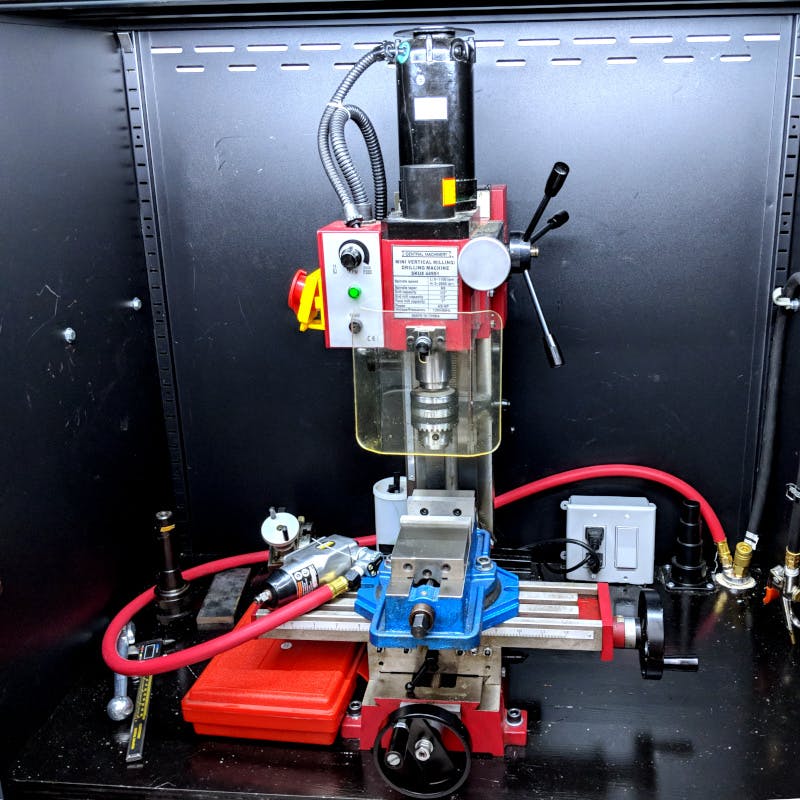
I thought that a simple Harbor Freight mini mill would be barely adequate for my needs.
I purchased one and quickly realized I was spoiled. Not surprisingly the travels, stiffness, and horsepower did not meet my needs compared to the Bridgeports I worked on earlier.
The Harbor Freight Mini mill is a good fit if you check ALL of these boxes.
- You only work with brass/plastics
- Max part size is 2"x2"x2"
- You plan on moving soon/frequently. (ie renting a home)
The use case for my ideal machine would be the conventional hobby garage projects. Parts for car and motorcycle projects.
After the Harbor Freight experience, new requirements were formed.
- Must be CNC (You can manual machine with a CNC but you can't CNC with a manual machine)
- Must use single-phase power. 220V is okay
- Must be able to cut steel with minimal chatter. A baseline stiffness must exist.
- Material removal rates (MRR) don't matter. Stepper motors are okay.
- Max part size will be around a piece of paper. 8.5"x11". Max height would Ideally be 6" as well.
- Operational automation doesn't matter. This is a hobby machine. No real profit optimizations here. This means tool changers, augers, automatic lubrication, etc. are not valued
- The machine can have its back to a wall.
- Relatively small footprint
One day after a phone call with a good friend, he mentioned that he had pre-ordered a Langmuir MR1 and should check it out.
After visiting their website, I realized they built a no-frills 3-axis personal CNC machine that you assemble yourself to save cost.
A very novel feature is that it uses poured concrete for the base!
This is a construction method that has me curious for quite a few years. There have been small but growing community of hobby CNC builders (opens in a new tab) that use epoxy granite for the machine base.
Granted OEMs have been doing this for quite a few years. Mineral casting is a search query (opens in a new tab) for the curious.
Enough talking. Lets go over the design choices that made me purchase this machine
Good design points
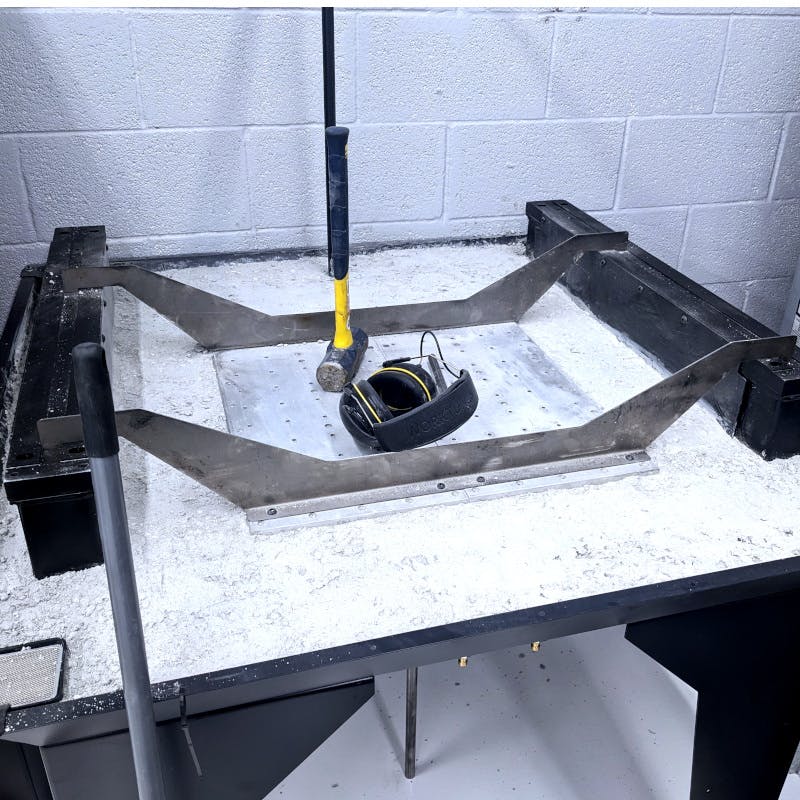
- Heavy machine base: - The machine requires you to pour about 500lbs of concrete into it. It adds stiffness and vibrational dampening to the machine. Many competitors tend to use linear extrusion as the frame. For my exact machine, my only regret is that my mix was a bit dry. I followed the instructions exactly, but should have added more water during the pour.
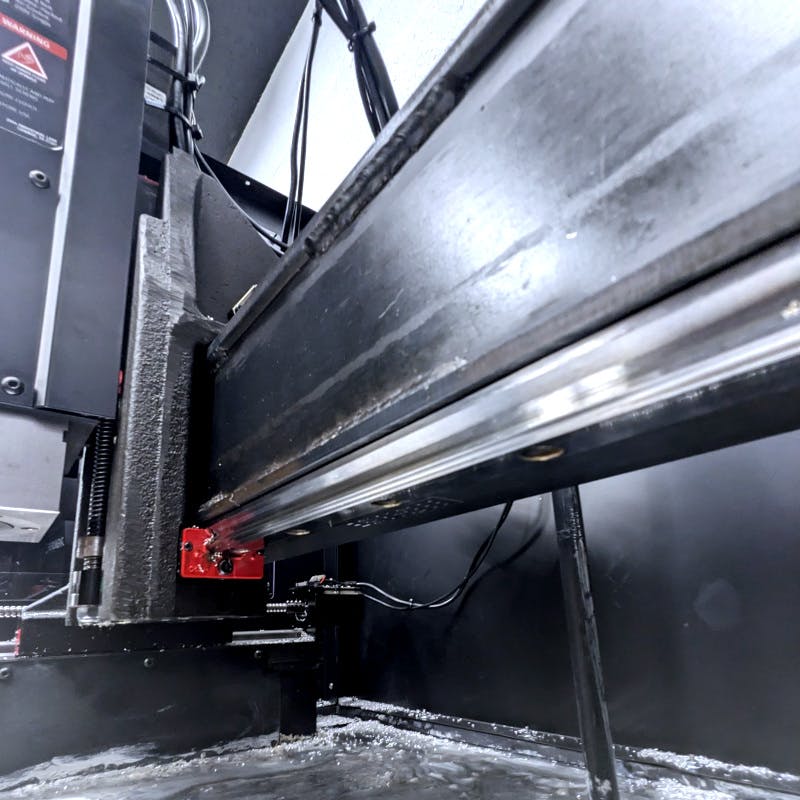
- Linear rails: This is used by many industrial CNC machines. It provides great stifness when compared to other hobby-style linear motion systems (Roller wheels, Linear bushings, etc)
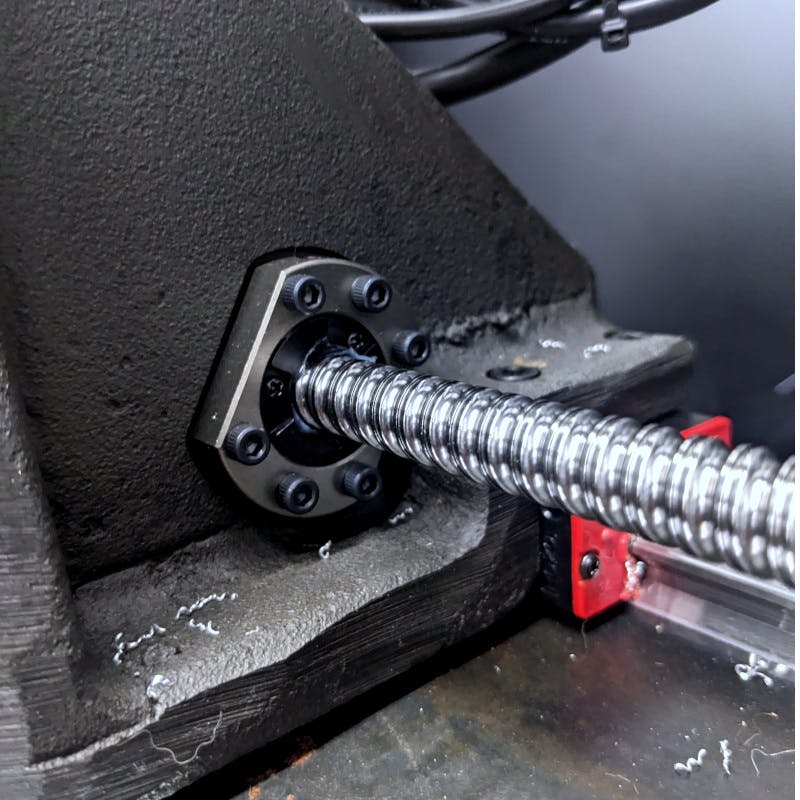
- Ball screws: Higher forces can be applied to the tool with minimal backlash. This is typically used in industrial CNC machines. Lower quality options would have be a leadscrew, lead threaded rod, or a belt drive.
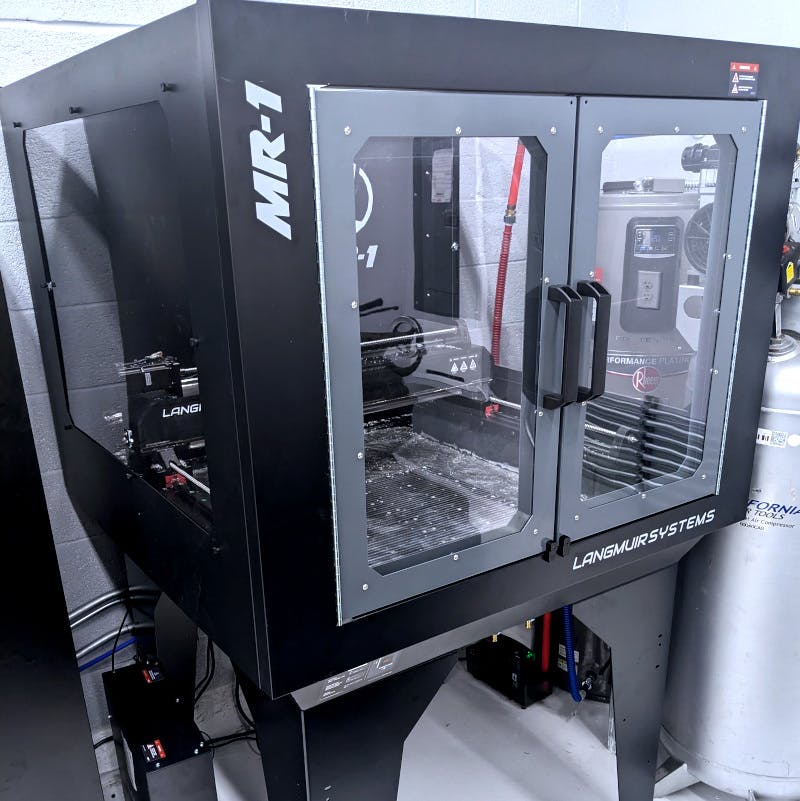
- Full size Enclosure: For anyone that wants a clean shop, this is required. This option was about $700 and 100% worth it over any DIY solution. The open frame CNC alternatives would require you to babysit the machine with a vaccum to keep a clean space.
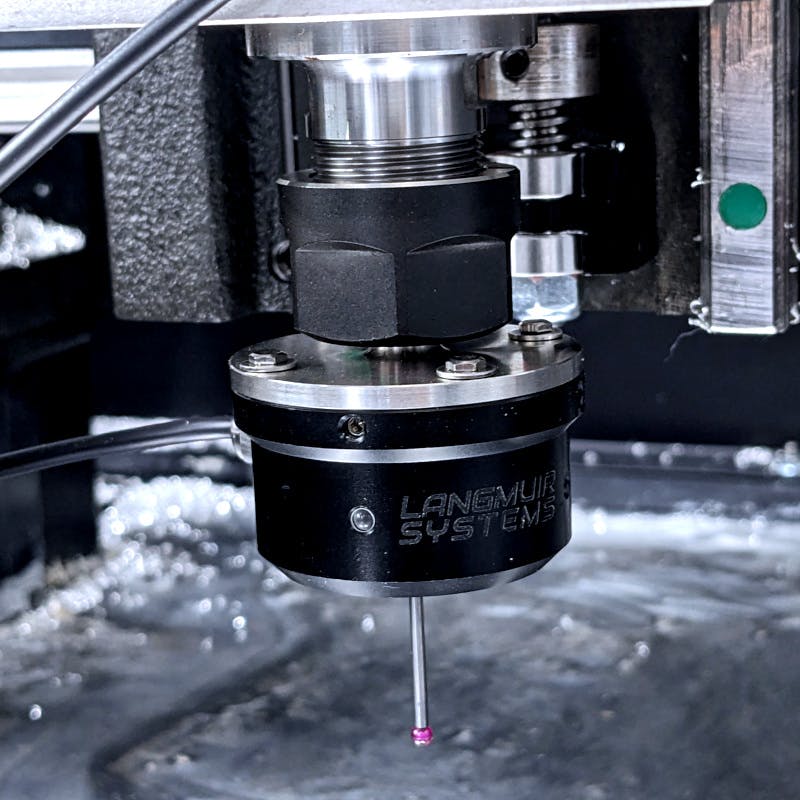
-
Tool and workpiece probing: This allows for the machine to determine where both the workpiece offsets and the tool length offset. It's quite a low cost option at $250.
For reference, industrial Renishaw units cost at least $5k. Other machines use conductivity tricks to determine the zeros. Or only does tool length offset measuring. This a killer feature, since it doesn't exist in machines of its class and price.
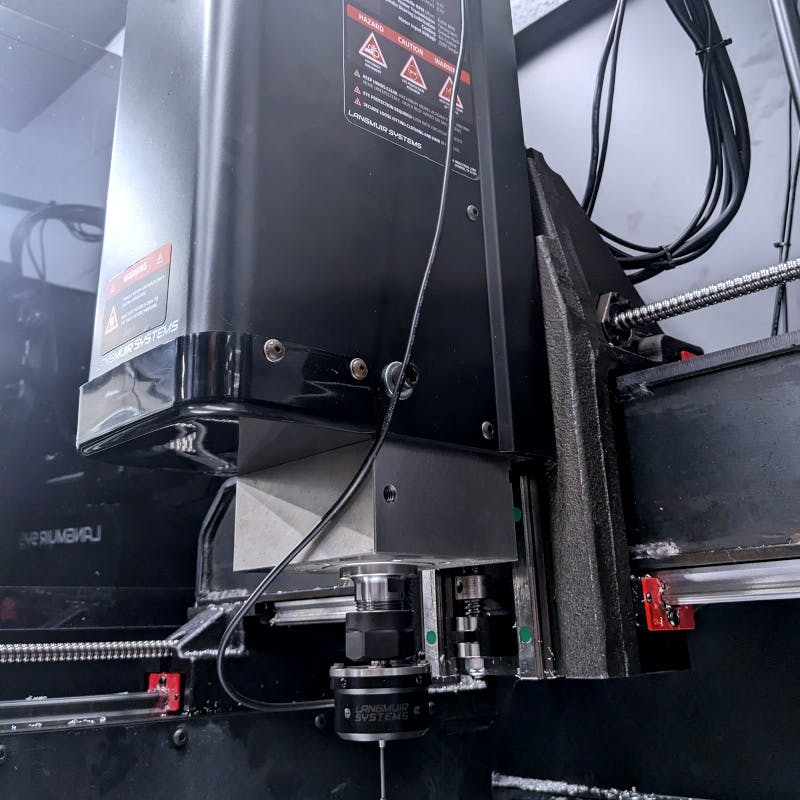
- Metalworking oriented spindle:
- Designed for general metal working (0-8000 RPM)
- Most small CNC spindles are just routers. Which have questionable stiffness and spin far too quickly (20,0000 RPM).
- The RPM range of this speindle puts the tool/material SFM (Surface Feet Per Minute) range within most metals
- ER20 Collet System: Very common in the metalworking industry
Design gripes
Please keep in mind that this machine was designed with a seriously low budget in mind. Much of my gripes would have increased the price.
-
Unergonomic control box and switch location: The control box is nominally located in the back left corner of the machine. This means that the E-STOP location is at your knees. The spindle, and control power are located at the back of the machine. I bet that most machine buyers will put the machine on the wall of a 2-car garage.
The back of the machine will be on a wall, and the control box pushes the entire machine forward by about 4 inches. Getting access to all of this is very difficult. I did not mount the control box to the legs to save floor space. It's currently sitting on the floor.
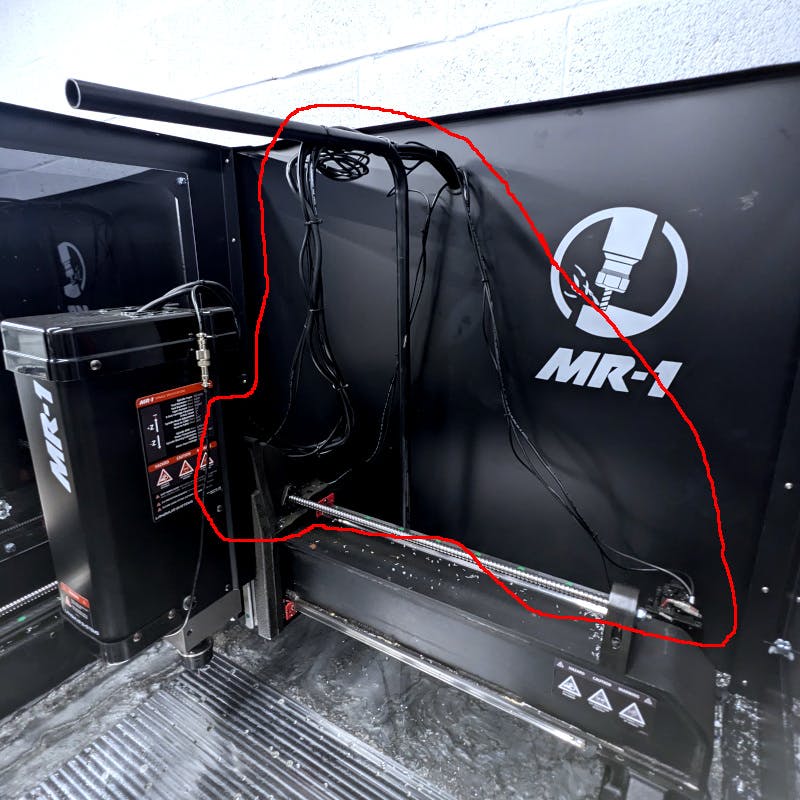
-
Sloppy Wire management: The wires going from the control box to the machine are dangling from a steel tube embedded in the concrete. It doesn't pass the "look right" test. I wish they optioned or had provisions for users to "easily" upgrade their machines to use energy chain-style wire management. I understand they did not do this for cost reasons.
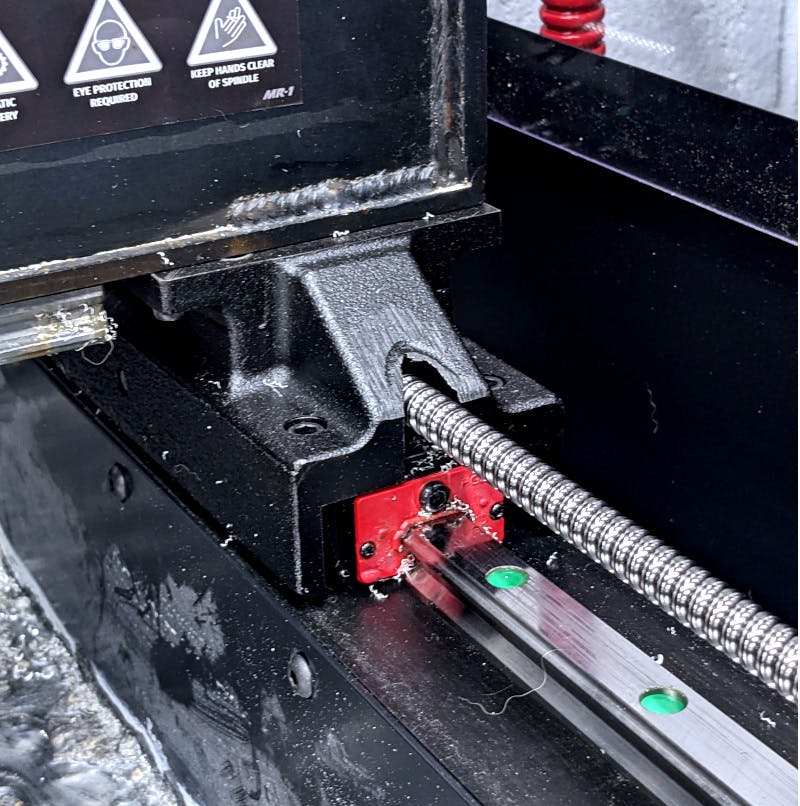
-
Crude lubrication method: The manual states to lubricate the rails by rubbing grease on the rail/ball screws. This is better than nothing. But the far better way to handle this is to add a zerk fitting to the linear blocks and ball screw nuts.
The way the cast parts are designed, it's just about impossible to add a remote grease fitting to all rails and ballscrews. It will give the option to pump out any foreign debris that slipped by the seals for the linear rail blocks and ball screw nuts.
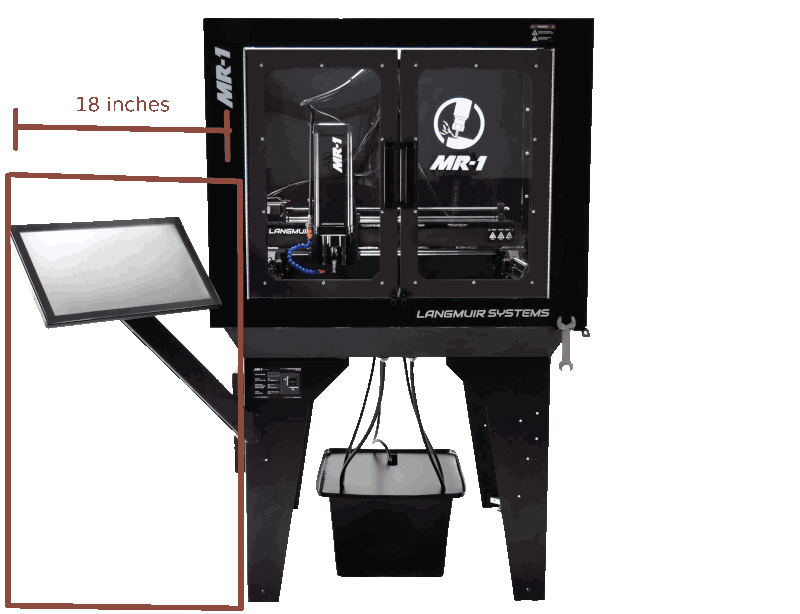
-
Large OEM Computer location/size: (Image above is borrowed from Langmuir website and modified with notes): If you purchase the computer as an option. It greatly increases the overall width of the machine. By about 18 inches. I did not opt for their computer because of this.
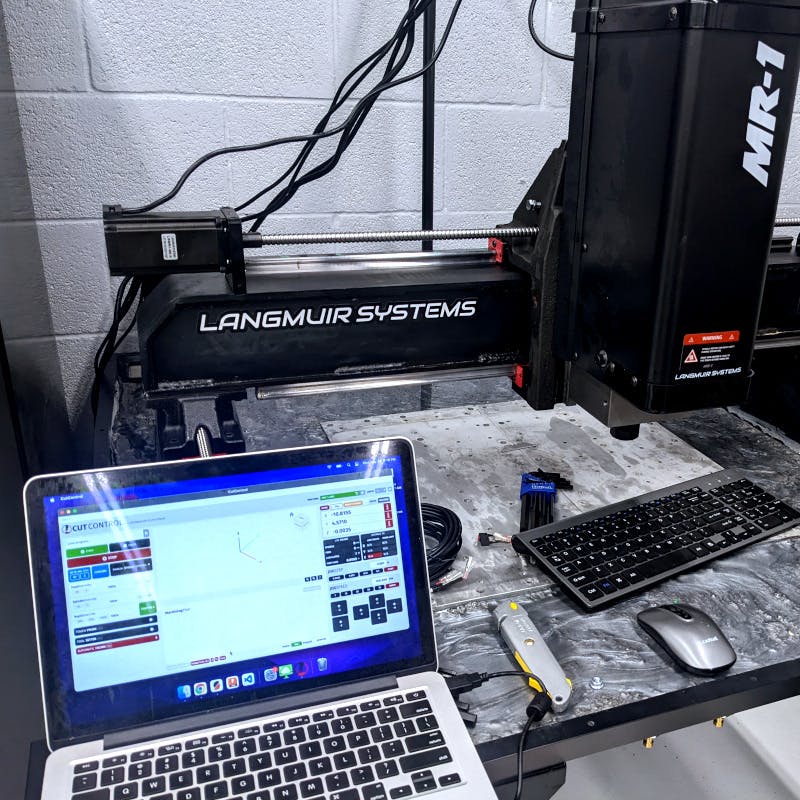
-
Non-Linux compatible control software The CutControl app is a java based application that sends G-Code commands to a GRBL-like machine controller. Allowing for Linux operating systems will open up the options of using different hardware for the control computer, as well as not needing to reinvent the wheel for many features lacking in CutControl.
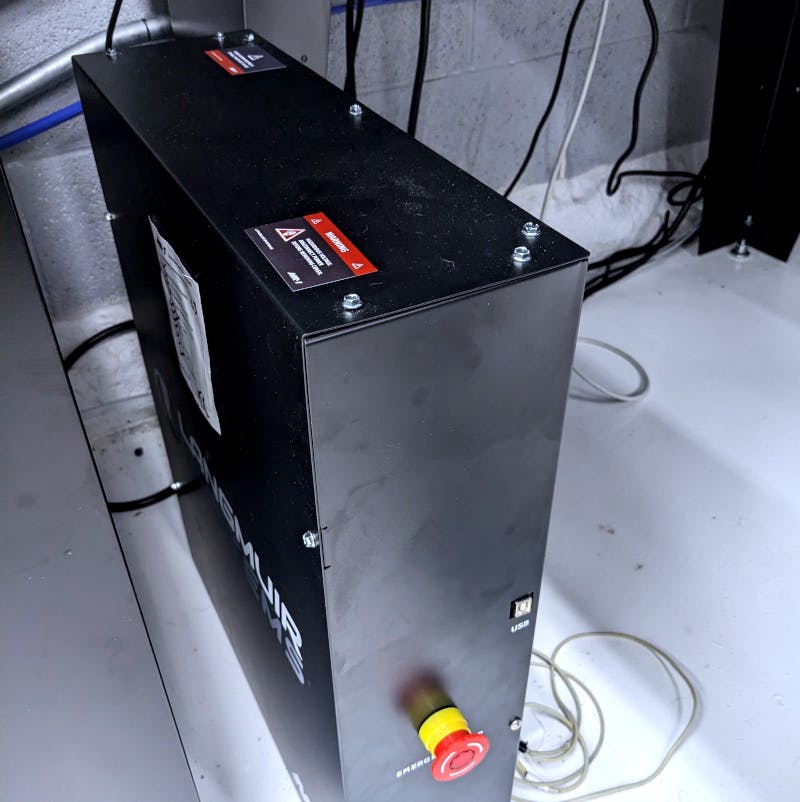
- Non-Vented Control Box: The control box is completely sealed. While this is great for preventing dirt and liquids from entering the machine. The outside of the enclosure gets very warm while in use. I'm sure the team at Langmuir has done their testing. I'm just curious about the long-term (5-10 years) reliability.
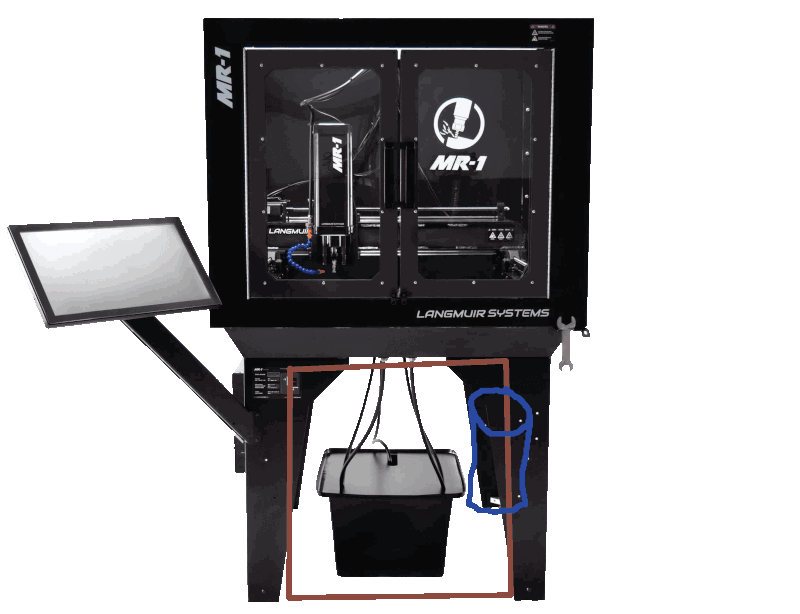
- Coolant System: (Image above is borrowed from Langmuir website and modified with notes) This option did not pass the "look right" test for me. I would have preferred a 5-gallon bucket and did not purchase this option
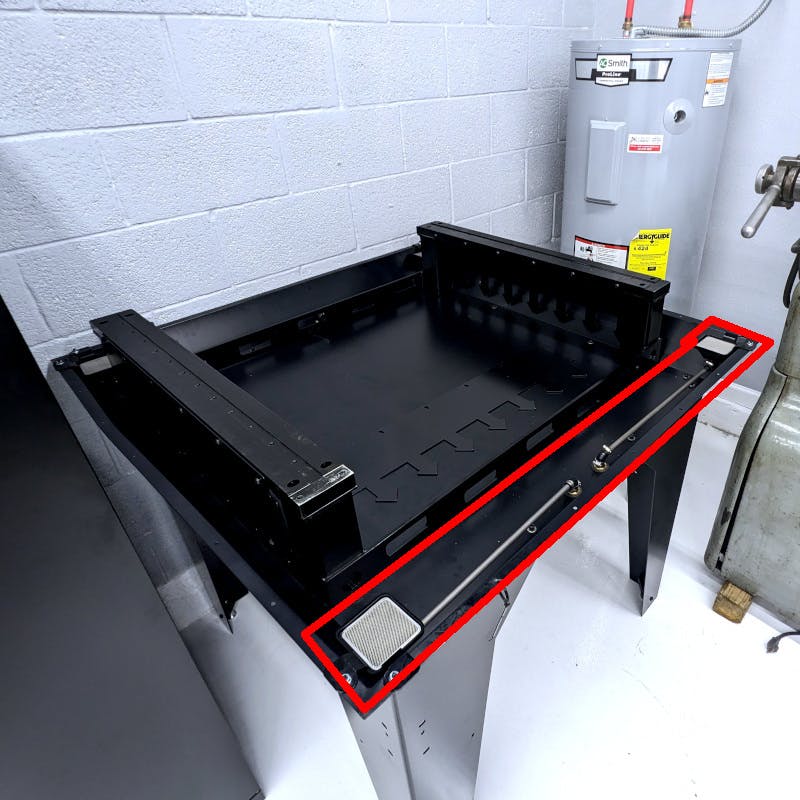
-
Coolant drain design: Due to the pan design. For the coolant drain to be placed in the extreme corners of the machine. A series of elbows, hose clamps, and pipes were embedded in the concrete to provide drainage. Not ideal.
The entire pipe and fitting stack seems to be very undersized once you take into account that gunk and chips will eventually seep through. The cleaning out the pipe and elbows will be tough to do.
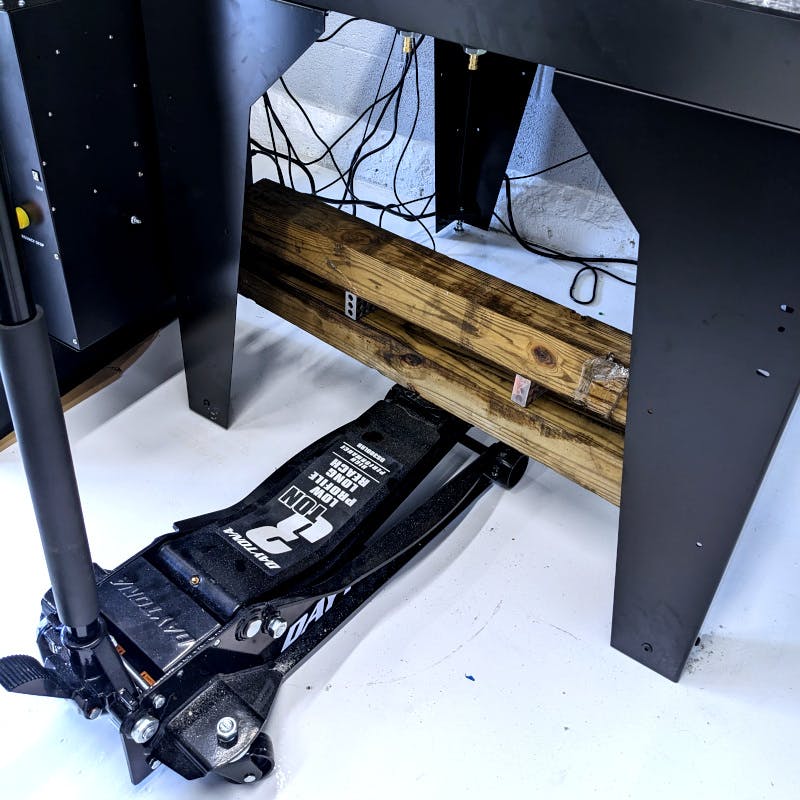
- Lack of rigging points: I had to use a very OSHA-approved setup of a car jack, 4x4 blocks of wood, and 123 blocks to elevate the machine enough to move around the shop. Provisions for a pallet jack would have been a nice option.
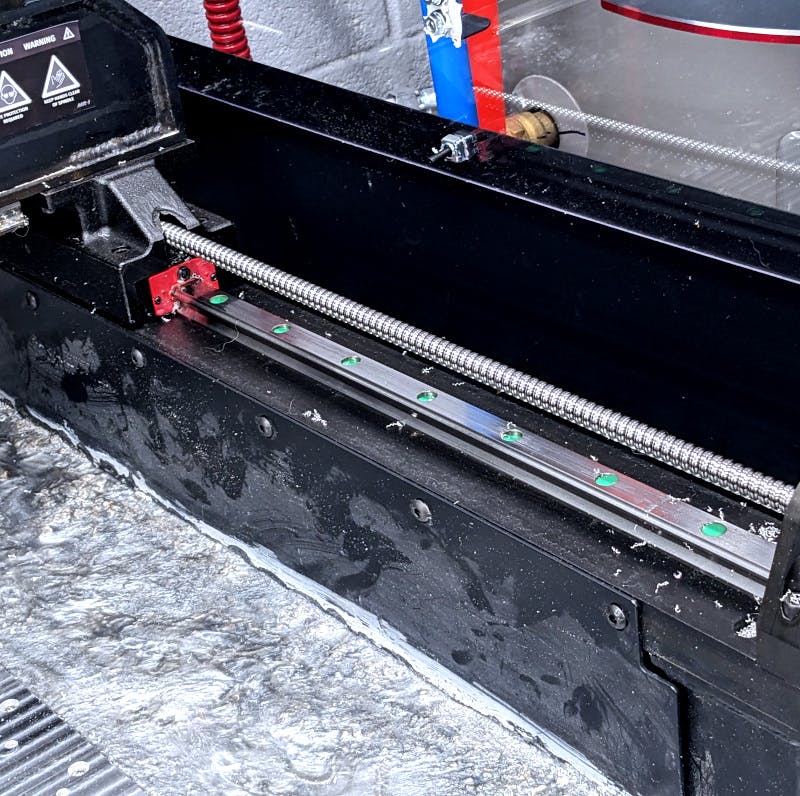
-
Exposed linear rails and ball screws: The Langmuir team said with their testing that saw no appreciable wear when the rails/ball screws were exposed to chips.
I still get nervous about this being exposed. Conventional machines have some sort of way cover or rubber bellows to prevent chips from affecting the surfaces/parts.
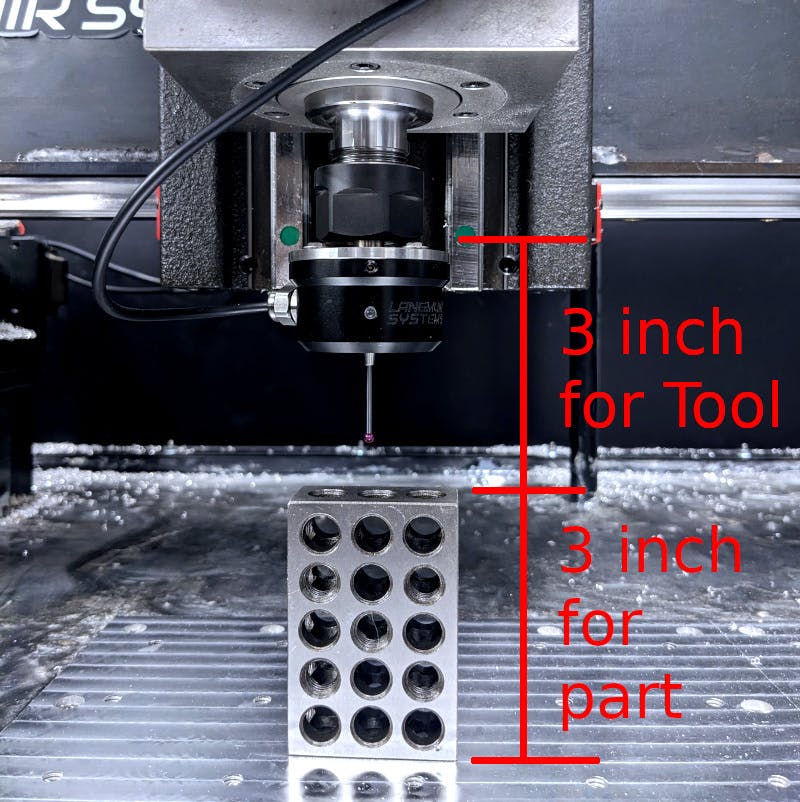
- Short Z-axis travel: In the machine's largest Z configuration. The max height from spindle to table is about 9 inches with 6.1 inches of travel. The effective max workpiece height is about 3 inches max. I determined this by dividing the Z travel by 2. Half is the part height and half is the tool height. This assumes no vice is being used
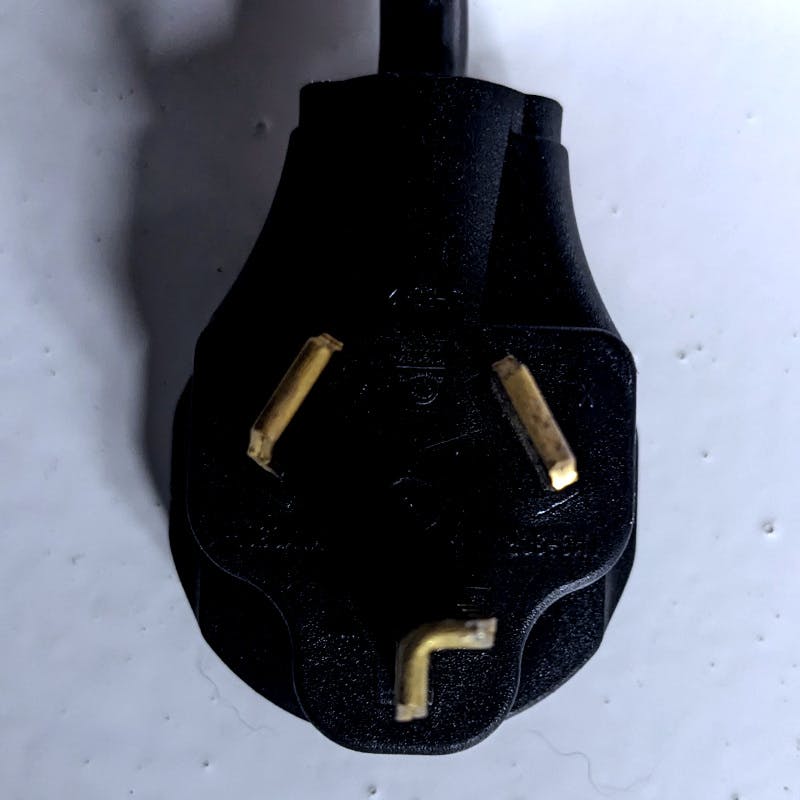
- Poor NEMA plug choice: A NEMA 10-30 plug was used to power up the spindle with 240V. This is a pretty bad standard since there is no explicit ground wire. The Nema 10-30 standard has 2 hots(120VAC) and 1 neutral. The actual plug should have been a Nema 6-30. Two hots and a ground
Free Design Improvements
Building on the previous comments, here are some free and paid options that would be nice if they existed.
- Relocate Control Box: Move the control box to the front of the machine and move the spindle/control power switches to the front of the machine
- Relocate Coolant Drains: Move the coolant drain(s) more towards the center of the machine, and eliminate the awkward elbows that are cast in the concrete. Grade the concrete the promote flow
- Space for Zerks: Modify the castings to allow zerk fittings to be installed on the X-axis ball screw nuts
- Linux-compatible CutControl: Allows for low-cost Rasberry PI usage
- Compact OEM HMI option: Put the control computer in a place that doesn't increase the overall width. Ideally, it would just be a tablet that's visiting the CNC control website
- Non-leaky doors: Include some weather stripping for the doors. So chips won't shoot through the cracks of the door and fall on the floor.
- Relocate wire grommet: Move the wire entry holes (through the enclosure) to the side of the machine. It will allow for the back of the machine to be planer with the wall.
- Ventilation holes: Put some ventilation holes in the control box to manage heat
- Ergonomic switch location: Relocate the power switches for the spindle and control to the front of the machine.
- Web-browser-based control: Allows for using tablet devices as HMI device
- Toolbox provision: Allow for toolbox to be mounted under the machine: Cut the legs to allow for a toolbox to be mounted. This was inspired by a member of the Langmuir Forum. LINK (opens in a new tab) to thread
Machine options that should exist
- Zerk fitting kit: For remote lubrication of linear rail and ball screws
- Pallet jack lift kit: Laser-cut sheet metal parts that allow for a pallet jack to lift the machine
- Hybrid stepper motors: Higher feed rates and reliability
- Energy chain kit: Proper wire management solution
- Sound tight kit: A flat panel that encloses the top for sound reasons.
- Z axis spacer kit: A 2-3 inch spacer that increases Z height at the expense of stiffness.
- Linear rail and ballscrew cover kit: Some form of rubber bellows with the associated bracketry to protect precision surfaces from chips
- Control box fan kit: Put a couple of fans in the control box
When you should buy this machine
- You only have single-phase 220V power available
- You plan on machining metal in a small space (400 sqft)
- You are working on non-time-sensitive hobby projects
- Your parts don't involve the use of many tools
When this machine is not a good fit
Like most things in life, use the right tool for the right job. The MR1 is no diffrent. If you keep this machine to hobby-grade prototype work, it will be a great fit. Here are some more specific uses cases when you will outclass the machine
- Any kind of ongoing part production that requires multiple tools
- You plan on moving often. It will require a forklift or drop trailer for every move
- You want to work on very tall workpieces and/or use long tools
- Anything related to unattended operation
- For this to be possible, the machine would need multiple features which would put the machine in the Haas mini mill category
- Servo motors
- Chip augers
- Tool changer
- Covered ballscrews/rails
- Energy chain and associated cables
- For this to be possible, the machine would need multiple features which would put the machine in the Haas mini mill category
If this machine included all those features. There would be no way for it to be priced at 25k+).
Alternative machines
There are other machines in the market that are similar in price to the Langmuir, but not the same class. Every machine listed below did not meet the right set of requirements.
- Shapeoko HDM
- Tormach PCNC 440 (if you squint the right way)
- Inventables XCarve PRo
When to buy a used industrial CNC machine
If space and power weren't a concern, I would very quickly just purchase a used VMC (Vertical Machining Center). It addresses almost all the shortcomings of the Langmuir at the expense of risk, and operational reliability.
NOTE: Running a 30-year-old CNC VMC is bound to have reliability problems. Just be ready for them
- In no particular order, look for CNC VMC machines from the following brands:
- Fadal
- Haas
- Brother
- Fanuc
Closing Thoughts
Overall I am very happy with the machine and its capabilities since it's great for the power, size, and budget constraints.
Granted I haven't run any real parts on this machine. I will report back in a few years with a much more refined opinion.
Did you enjoy this website?
Operating at the intersection of mechanical, software and electrical engineering is wildly interesting for me.
These projects can take months to complete, and I'd love to email you when I post new content.
Similar to other personal websites. I will never spam or distribute your email.
